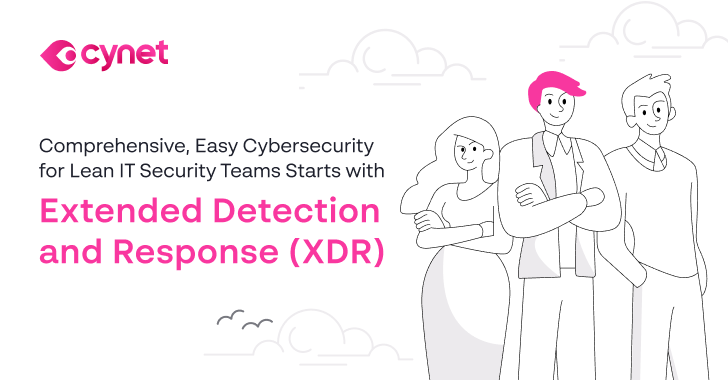
Breaches don’t just happen to large enterprises. Threat actors are increasingly targeting small businesses. In fact, 43% of data breaches involved small to medium-sized businesses. But there is a glaring discrepancy. Larger businesses typically have the budget to keep their lights on if they are breached. Most small businesses (83%), however, don’t have the financial resources to recover if they are a victim of an attack.
These small security teams were getting lost in the shuffle…until now.
The rise of XDR
As the threat landscape changes and bad actors continue to evolve their tactics, the industry is responding with new solutions and approaches to the way we do cybersecurity. The most recent evolution of cybersecurity technology is extended detection and response (XDR).
There’s no doubt you’ve heard of it. But do you have a firm grasp on what it really is and its unique value?
If you shook your head “no” – you aren’t alone.
Industry experts cannot agree on its definition. But – while some may be showing up late to the party – these experts are reaching the conclusion that XDR is necessary to protect organizations from threats that lurk beyond endpoints.
But what is it?
Simply put: XDR extends visibility across the environment and exposes threats that could be easily overlooked when relying on point security solutions. It provides greater visibility because it centralizes, normalizes, and correlates data from multiple sources. This allows security teams to see every phase of an attack.
Unfortunately, this new approach to cybersecurity often comes at a cost and requires resources and headcount that small security teams can’t afford. If there aren’t enough eyes on alerts, the skills to properly integrate technology, and the capacity to manage security operations, XDR can end up creating more headaches than improvements to security posture.
XDR is commonly viewed as a solution exclusive to enterprises for this reason. Now here’s some good news:cybersecurity providers are stepping forward to close the gap.
XDR isn’t one-size-fits-all
Just as the industry can’t land on a single definition of XDR, there isn’t a single XDR solution out there. So why can’t there be a viable solution for small businesses that desperately need comprehensive protection but lack the resources to get it?
There is.
According to Cynet, a cybersecurity provider of an end-to-end and natively automated XDR platform, this new approach can provide a number of benefits for small security teams that don’t have the budget to invest in a massive tech stack.
- Accuracy – XDR platforms combine prevention and detection controls to give extended visibility that can spot incoming threats. This wider view helps automatically surface real threats vs. wading through never-ending alerts.
- Efficiency – Security teams get a lot of time back when they are no longer triaging a mountain of alerts. XDR can automatically remediate threats in some cases and provides rich data and context that significantly cuts down time spent on the manual investigation.
- Cost reduction – XDR platforms like Cynet’s can reduce the number of technologies required for security operations, meaning that lean security teams save money by consolidating. It also allows these small teams to focus their attention on other priorities instead of putting them in a situation where they have to either look under couch cushions to increase headcount or let other critical aspects of their business suffer.
- Simplicity – When it is done right, XDR can be a solution that puts an end to spending hours managing a plethora of security tools. There is an affordable, single platform that gives organizations comprehensive protection.
Are you interested in learning more? Cynet recently published an eBook, “Comprehensive, easy cybersecurity for lean IT security teams starts with extended detection and response (XDR).” Download the eBook here.













